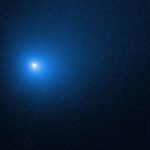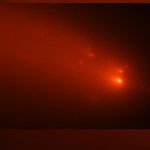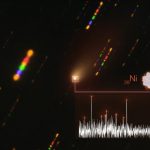Interstellar comets are more common than thought0
- From Around the Web, Space
- August 24, 2021
“We’re finding that there could be substantially more visitors,” say Harvard scientists

“We’re finding that there could be substantially more visitors,” say Harvard scientists

Source: CNN A Comet that intrigued astronomers with its first appearance in our sky at the very end of 2019, but it disintegrated into 30 tiny ice shards months later. Now, observations made while the comet, named ATLAS, was still intact have shed light on the comet’s “family,” which stretches back thousands of years. Comet

Astronomers have discovered the largest known comet, and it’s about a thousand times more massive than others.

Using the Near-Infrared Spectrograph (NIRSPEC) instrument at the Keck II telescope, astronomers conducted near-infrared spectroscopic observations of the hyperactive Jupiter-family comet 46P/Wirtanen during its long-anticipated close flyby to Earth in December 2018.

Using spectroscopic observations from ESO’s Very Large Telescope, a duo of astronomers from Poland has detected atomic nickel vapor in the cold coma of 2I/Borisov, an interstellar comet discovered on August 30, 2019 by amateur astronomer Gennady Borisov.

In a new paper published in the Astronomical Journal, astronomers from the United States, Canada and Europe provide a detailed characterization of the physical properties and orbital evolution of the asteroid 2020 CD3 — Earth’s second discovered temporary natural satellite, or minimoon. Their results prove that 2020 CD3 is a natural body and not some relic piece of human-made space junk.

Centaurs are rare celestial objects that can combine some of the different features of asteroids and comets. They’re basically rocky in nature, like asteroids, but can also throw out clouds of dust and gas as their exteriors vaporize, like comets.

An atmospheric light show previously relegated to planets and Jupiter moons is found on comet using data from ESA’s Rosetta spacecraft

NASA Hubble Space Telescope images of comet NEOWISE, taken on Aug. 8, zero in on the visitor’s coma, the gossamer shell of gas and dust that surrounds its nucleus as it is heated by the Sun. This is the first time Hubble has photographed a comet of this brightness at such resolution after this close of a pass by the Sun.

The process won’t be complete until 2063



